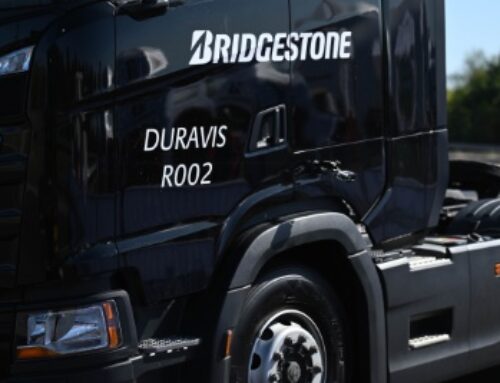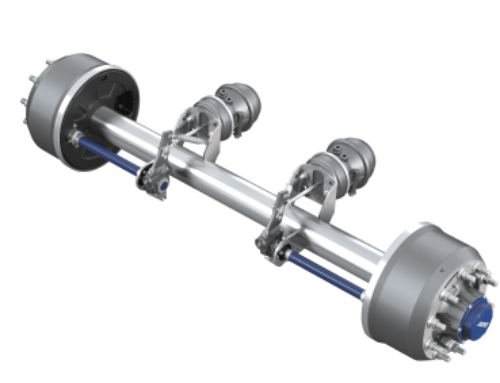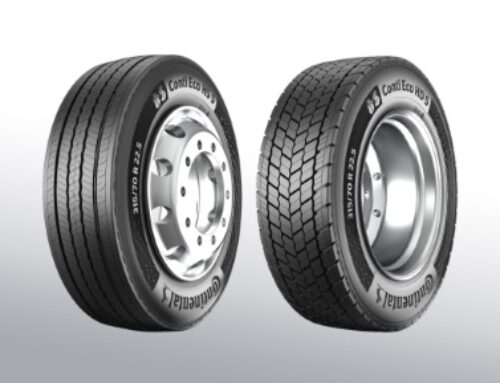Red Forge in LCV overload warning
Weighing equipment provider Red Forge has emphasised the importance for operators of light commercial vehicles (LCVs) of complying with vehicle loading laws, in order to prevent injuries and com ply with relevant regulations.
ply with relevant regulations.
“Defining what are reasonable and practical measures regarding the way loads are managed on board LCVs, takes many businesses into uncharted waters,” said Red Forge’s Phil Morrison.
“However, understanding is emerging from government and enforcement agencies, encouraging companies, and other organisations to implement structured methodology – thus ensuring duty of care and compliance where the safe loading of vehicles is concerned.”
He continued: “Current UK health and safety at work regulations place a duty of care upon employers to ensure practical steps are taken to assess and manage the risks to their employees and others that may be affected by their work activities in the workplace.
“Perhaps what many people may not realise is that under this legislation, vehicles that are used for business purposes are also considered to be part of the ‘workplace’.”
The company says its recently launched Limitlite Tradesman axle load indication system was formulated in response to increasing market demand in the LCV sector for a simple, practical visual driver aid – and is designed specifically to ensure the vehicle manufacturers’ gross and axle weight limits are not exceeded.
“The Tradesman product allows an at-a-glance check for both front and rear axle loads, as well as gross vehicle weight,” said Phil Morrison, “thus ensuring that drivers, in addition to the companies and organisations they represent, are protected from the fines and penalties that can be imposed as a result of overloading vehicles.”
Meanwhile, senior sales engineer Stuart Richardson warned that: “With the DVSA targeted approach, especially to vehicle overloading and licensing, we are starting to hear drivers, transport managers, distributors and leasing companies all starting to pass the buck.
“Recently I was asked what a kerb weight was. That is easy to explain, but for a prospective vehicle purchaser to then find what each OEM uses as a kerb weight is not always so obvious. Mixed in, you have the issue of overloading on axles as well as the GVW. The fact that newer vehicles are heavier than their predecessors is making for less and less payload.”
He warned that the way some vans’ payload capacities are being advertised could be described as slightly misleading – pointing out that: “In the industry, payload is what your vehicle can carry, so your fuel is part of the payload, plus the driver and passengers, tools and racking etc.”
He called for more open information and realistic weight assumptions for fuel and drivers – as well as support for drivers who try to stay legal, and bigger fines for those who ignore the rules.
Red Forge, which is celebrating 40 years of trading this year, offers a va riety of weighing products suitable for commercial vehicles. The Axalert axle load indicator was developed by the late technical director and founder of Red Forge, John Freeman. The first installations took place in 1983.
riety of weighing products suitable for commercial vehicles. The Axalert axle load indicator was developed by the late technical director and founder of Red Forge, John Freeman. The first installations took place in 1983.
More recently the company has reported significant sales increases, and the range has expanded to include products such as the Limitlite, as well as the Omniweigh load cell-based on-vehicle weighing system. Red Forge systems are backed up by a full lifetime warranty, subject to conditions.
Red Forge’s top weight management tips
1) Know your responsibilities. Whether or not your fleet requires an operator licence, it must still comply with the law. Overloading a vehicle constitutes a contravention of health and safety legislation and could lead to a negligence claim, if it is proven that an employer has failed in its duty of care to an employee. Operator covered by O-licensing rules have an additional obligation to notify the traffic commissioner of any unspent convictions, including fines and prohibitions for overloading. This will affect your operator compliance risk score (OCRS), meaning you are more likely to be stopped by the DVSA.
2) Beware the ‘see-saw effect’. Ensure that a vehicle’s load is within the permitted weight limits not only for gross  vehicle weight (GVW), but also its plated weight for the front and rear axles. Although you could be running legally in terms of the whole vehicle, you could still be breaking the law due to a weight bias at the front or rear, if a vehicle has been loaded unevenly.
vehicle weight (GVW), but also its plated weight for the front and rear axles. Although you could be running legally in terms of the whole vehicle, you could still be breaking the law due to a weight bias at the front or rear, if a vehicle has been loaded unevenly.
3) Keep tabs on your trailers. If there is extra weight behind the rear axle, such as when a trailer is carried, the weight on the rear axle will increase but the front axle load will diminish. If, however, the trailer is not loaded correctly and there is negative weight on the tow ball behind the rear axle, the weight on the rear axle will drop and the front will increase. This would create a highly dangerous situation, as the whole vehicle would become unstable due to lack of trailer control.
4) Be aware of the penalties. A graduated fixed penalty system exists for the enforcement of overloading offences. Drivers can be fined £100 if the permitted weight is exceeded by less than 10 per cent, £200 if less than 15 per cent, and £300 for excesses of 15 per cent and over. A vehicle overloaded by more than 30 per cent can result in a court summons. In addition, a further £60 fixed fine and three penalty points can be issued by DVSA if it feels the driver is using the vehicle in a dangerous condition, including due to weight position and distribution of load.
5) Prosecutions are possible. DVSA or the police may decide to prosecute, especially in cases of repeat offences or serious overloads – and in this scenario, both the operator and driver are liable for a fine of up to £5,000 per offence. For a 3.5-tonne vehicle, therefore, a total fine of up to £15,000 could apply to both driver and company separately – incorporating offences resulting from front, rear and gross overloads. You could also lose your operator licence at the traffic commissioner’s discretion.
 6) Consider safety and efficiency. Aside from the legalities, overloading can present a serious health and safety problem. When overloaded the vehicle is harder to steer, and braking efficiency decreases. It also increases the general wear and tear on transmission, tyres and suspension components, resulting in increased maintenance costs. In addition, insurance policies may be null and void if a crash was found to be caused by an overloaded vehicle – while fuel consumption rates and road surfaces also suffer.
6) Consider safety and efficiency. Aside from the legalities, overloading can present a serious health and safety problem. When overloaded the vehicle is harder to steer, and braking efficiency decreases. It also increases the general wear and tear on transmission, tyres and suspension components, resulting in increased maintenance costs. In addition, insurance policies may be null and void if a crash was found to be caused by an overloaded vehicle – while fuel consumption rates and road surfaces also suffer.
7) Assess all the options. A wide range of weighing system options are available, and Red Forge’s range breaks down into three general types. Axle load indicators offer basic overload protection by warning the user of approaching and exceeded load limits for both individual axles and GVW, and are the most common form of system suitable for commercial vehicles. Easy to retrofit, their accuracy falls well within DVSA guidelines for the enforcement of overload prosecutions. On-board weighing systems, which deploy loadcells fitted directly to the subframe to measure weight, are usually even more accurate, and require little or no maintenance – but retrofits are more costly. The third category, Class III and IV certified weighing systems, are the most accurate, and necessary to comply with charge-by-weight regulations.











